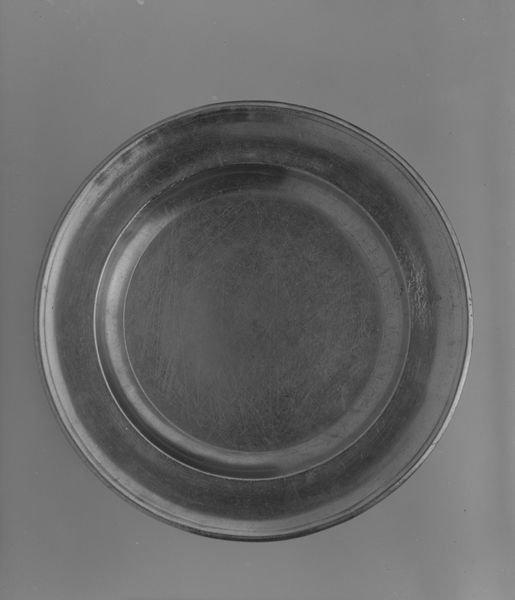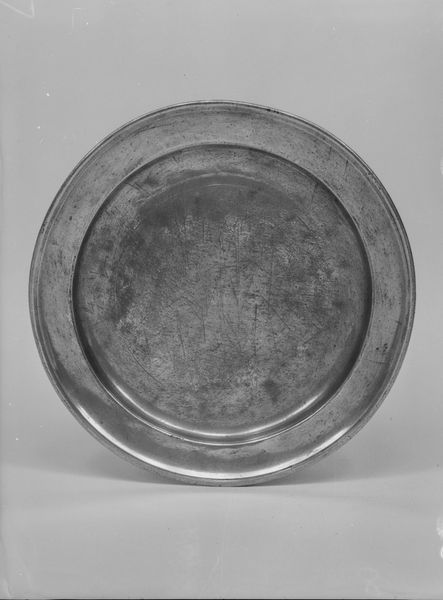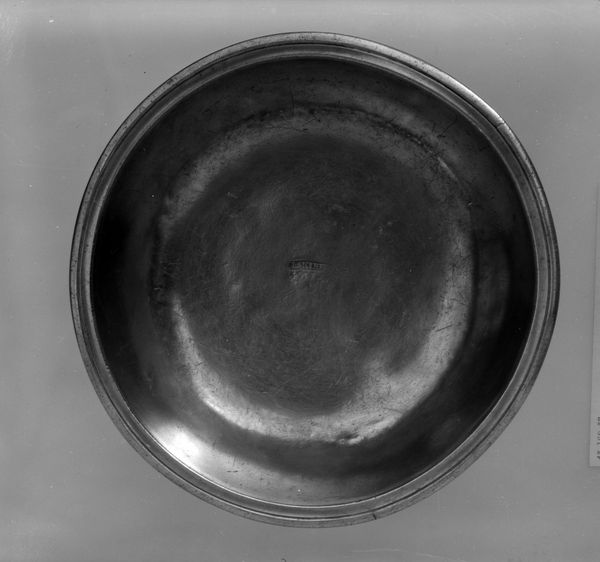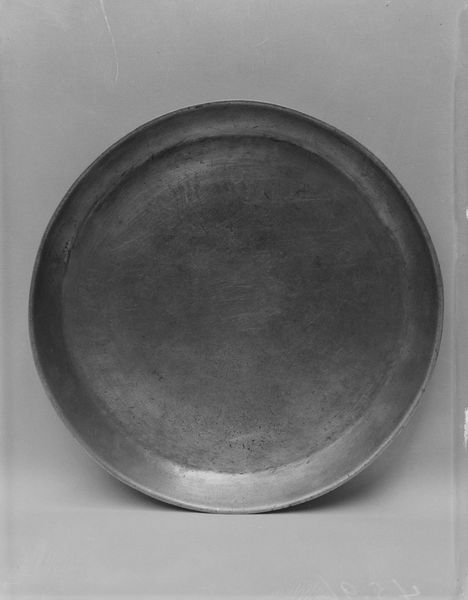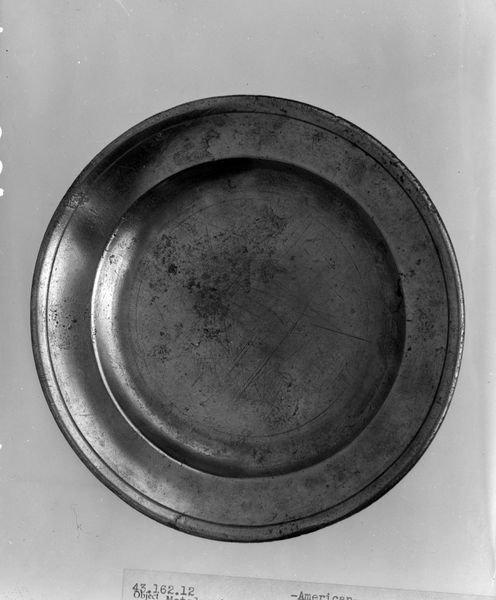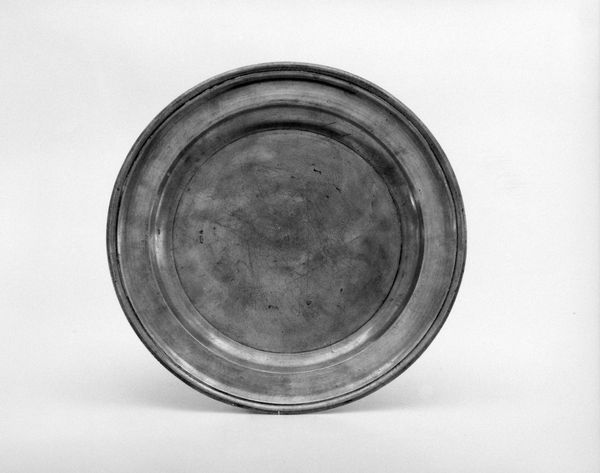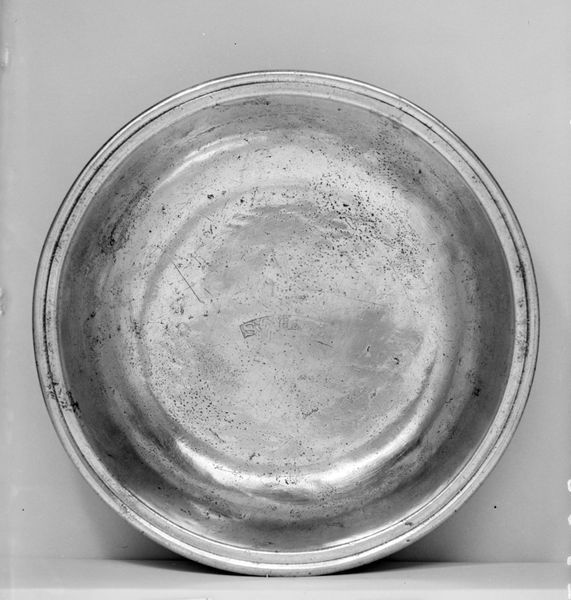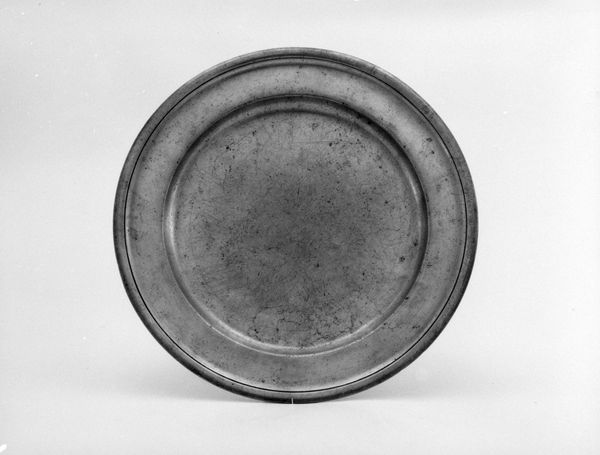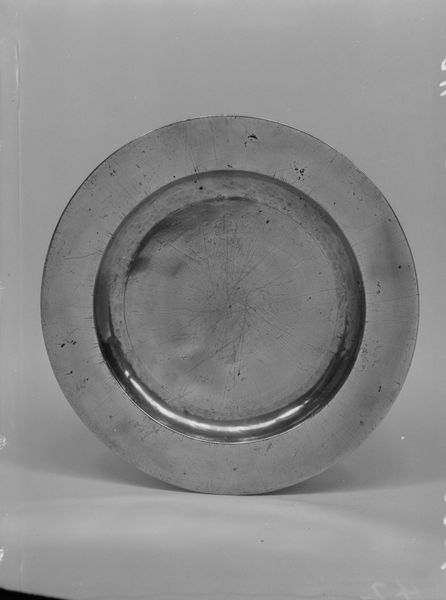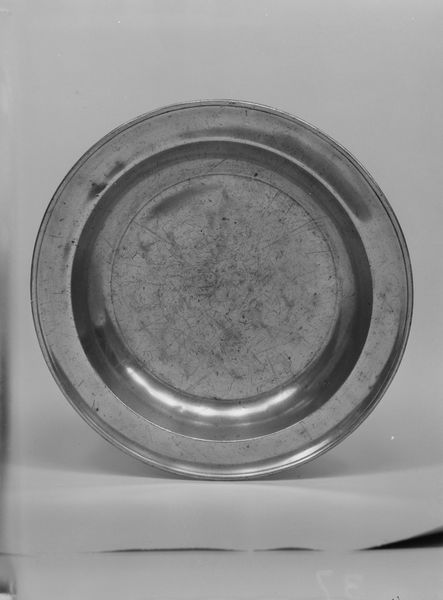
metal, sculpture
#
metal
#
sculpture
#
geometric
#
classicism
#
sculpture
Dimensions: H. 1/2 in. (1.3 cm); Diam. 5 1/2 in. (14 cm)
Copyright: Public Domain
This plate was made by Richard Lee sometime before 1823. It’s made of pewter, an alloy of tin and other metals like lead and copper. Pewter was a common material for dishware in the 18th and 19th centuries, prized for its durability and relatively low cost. The plate's surface is smooth and slightly reflective, with a soft, gray sheen characteristic of pewter. You can probably see concentric lines and subtle imperfections, evidence of the manufacturing process, likely involving casting, hammering, and polishing. The simplicity of its form speaks to its utilitarian function. The rise of pewter coincided with the growth of a middle class, eager for affordable alternatives to silver. The plate embodies a shift towards mass production and wider access to goods. Yet, the inherent qualities of the material and the hand-finishing give it a distinctive character, a testament to craft within an emerging industrial age. It’s a reminder that even the most functional objects can carry cultural and social meaning.
Comments
No comments
Be the first to comment and join the conversation on the ultimate creative platform.
